Armillaria mellea: the honey mushroom
2 years ago · Updated 6 months ago
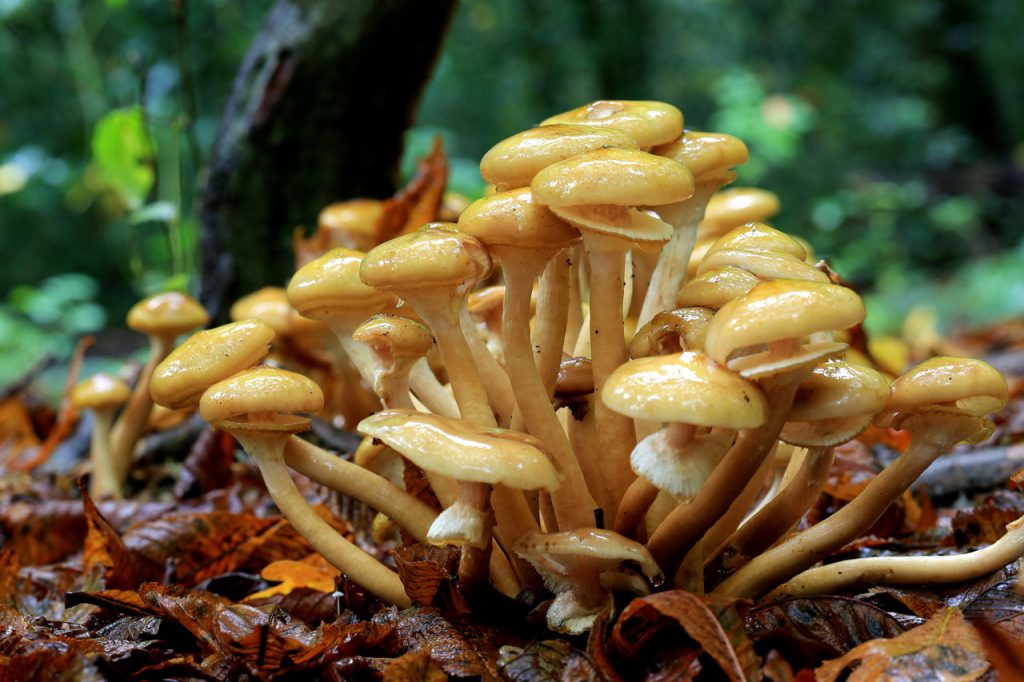
Fungi are fascinating organisms that abound in our forests and fields, and one of the most intriguing varieties is Armillaria mellea, commonly known as the “honey mushroom”.
This species has a rich history and a series of unique characteristics that make it worthy of study. Join us on a journey through the world of Armillaria mellea as we explore its characteristics, habitat, edibility, and much more.
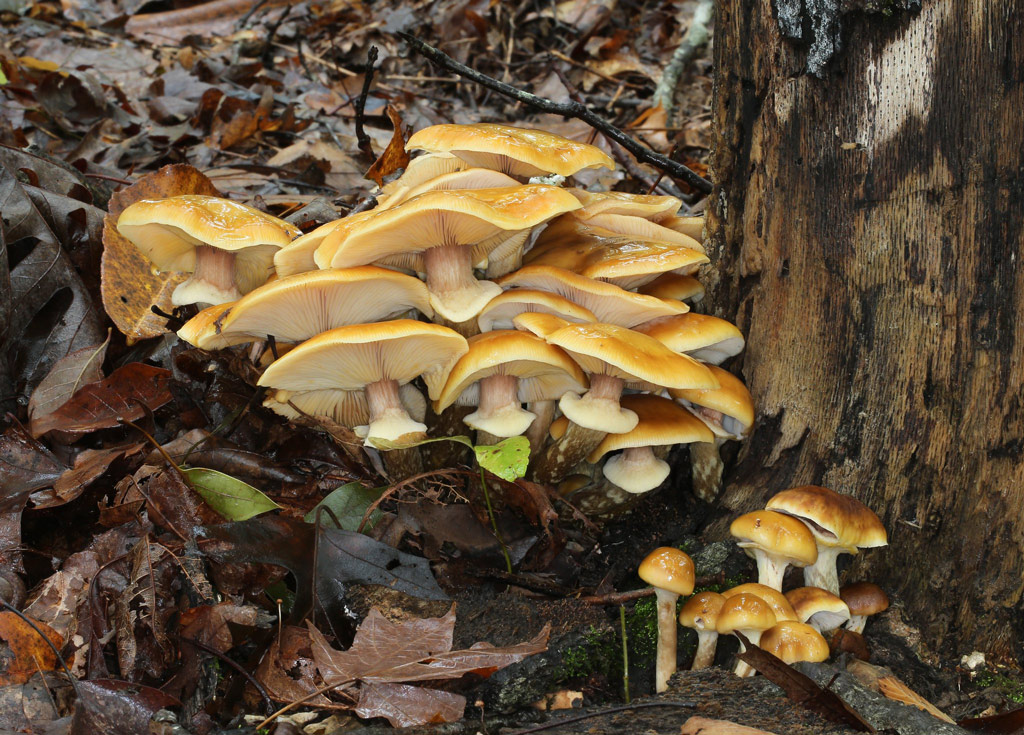
Names of Armillaria mellea
The Armillaria mellea mushroom has been known by various names over time, some of the most notable synonyms include: Armillariella mellea, Clitocybe mellea.
The name of this mushroom comes from its relationship with honey and its characteristic color. In Latin, “melleus” means honey, which perfectly matches its distinctive color and flavor. Thus, the popular names for this mushroom refer to its color: honey-colored Armillaria, honey mushroom.
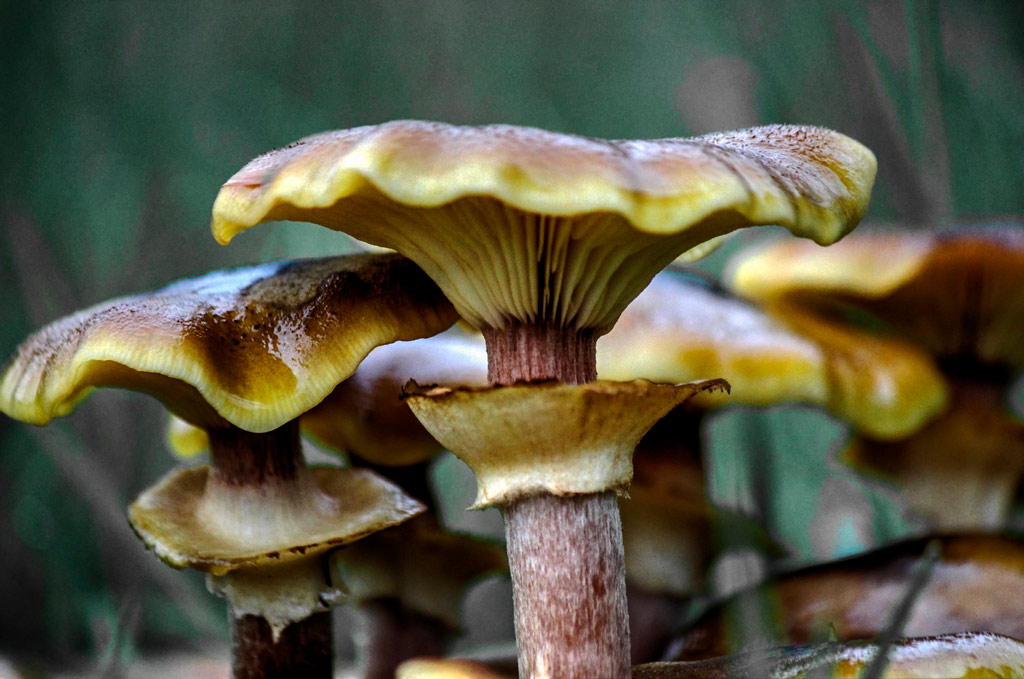
Characteristics of Armillaria mellea
Now let's focus on the physical characteristics of the honey mushroom:
Cap
- Variable size, ranging from 3-15 cm.
- Initially convex in shape, evolving into a flat appearance with a small central bump.
- Cap margin wavy and striated.
- The cuticle becomes slimy when wet.
- It varies in color, ranging from honey and cinnamon tones to leather, reddish brown, or olive.
Gills
- The gills are sparse and located under the cap.
- Initially, they are white with yellow or pinkish highlights, but over time they become more faint and darken.
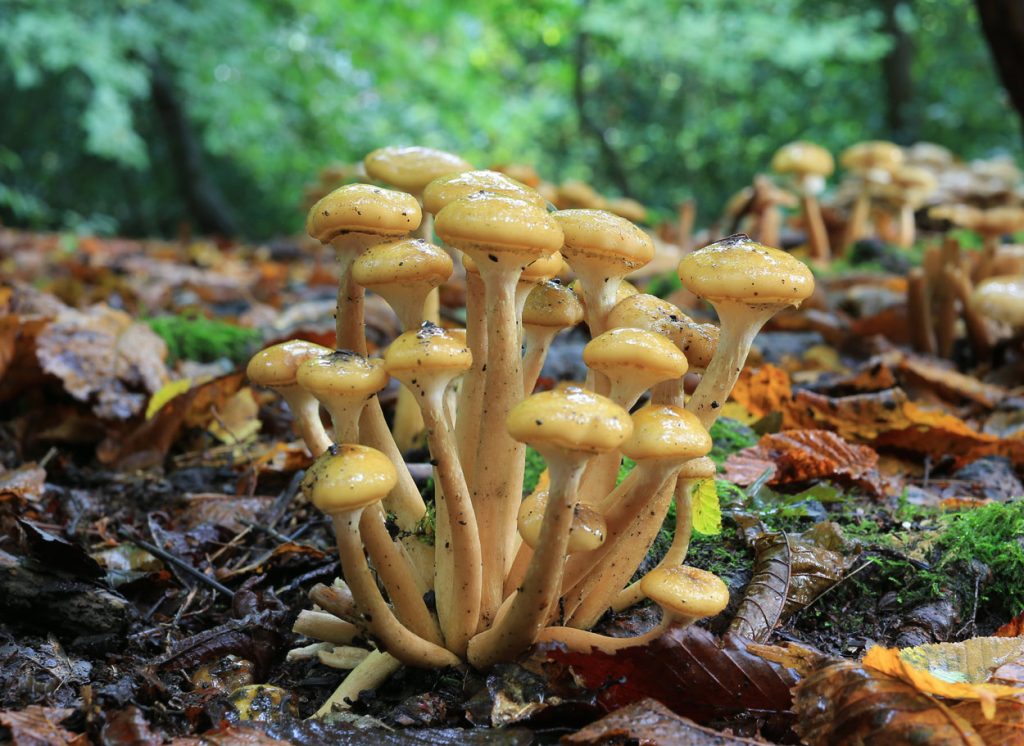
Stem
- The stem of Armillaria mellea measures 5-7(18) × 0.5-3 cm.
- It is slender, fibrous, and elastic.
- The upper part of the stipe is pink and striated, while the lower part is brown and becomes darker towards the base.
Ring
- A distinctive feature of this mushroom is the formation of an upper ring from the partial veil.
- The ring is thick, durable, and striated, with a pale white color on top and yellowish-brown to reddish-brown on the underside.
Characteristics of the flesh of Armillaria mellea, the honey mushroom
The flesh of this mushroom also deserves analysis:
- The flesh of the cap is firm and appreciated in cooking.
- However, the stem has a fibrous, leathery flesh that is not considered edible.
- Armillaria mellea has a faint mushroom odor and a slightly sour, sweet taste.
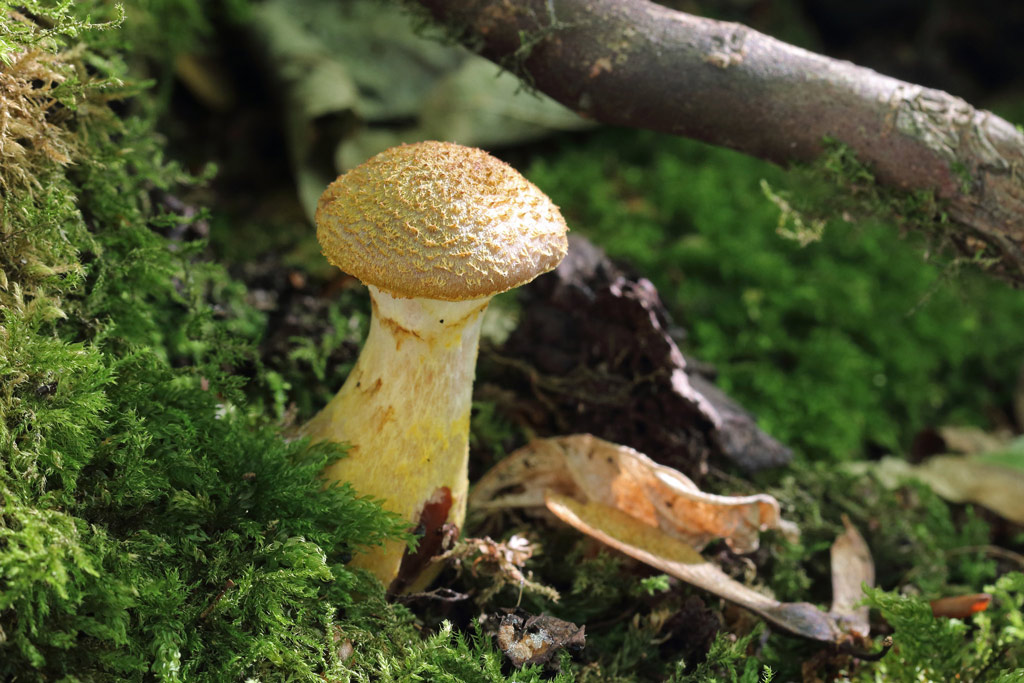
Habitat of Armillaria mellea
The natural environment of Armillaria mellea is equally intriguing:
- This mushroom tends to bloom in autumn, clustering on living trees and stumps.
- Sometimes it can be found growing alone and can reach considerable sizes.
- It is interesting to note that this species can act both as a saprophyte, decomposing dead organic matter, and as a parasite, affecting living trees. Its lifestyle is adaptable and beneficial for its survival.
Edibility or toxicity of Armillaria mellea
One of the most relevant aspects for mycology enthusiasts is the edibility of Armillaria mellea:
- This honey mushroom is considered good for consumption, provided it is properly cooked.
- It is important to drain off the liquid that forms during the first cooking and discard the tough stem, which is not suitable for consumption.
- Armillaria mellea is also suitable for preservation, making it a valuable culinary resource.
- It is recommended to remove the indigestible slime during cooking.
- Be careful and never harvest this mushroom after frost or freeze it raw, as in these cases it could become poisonous.
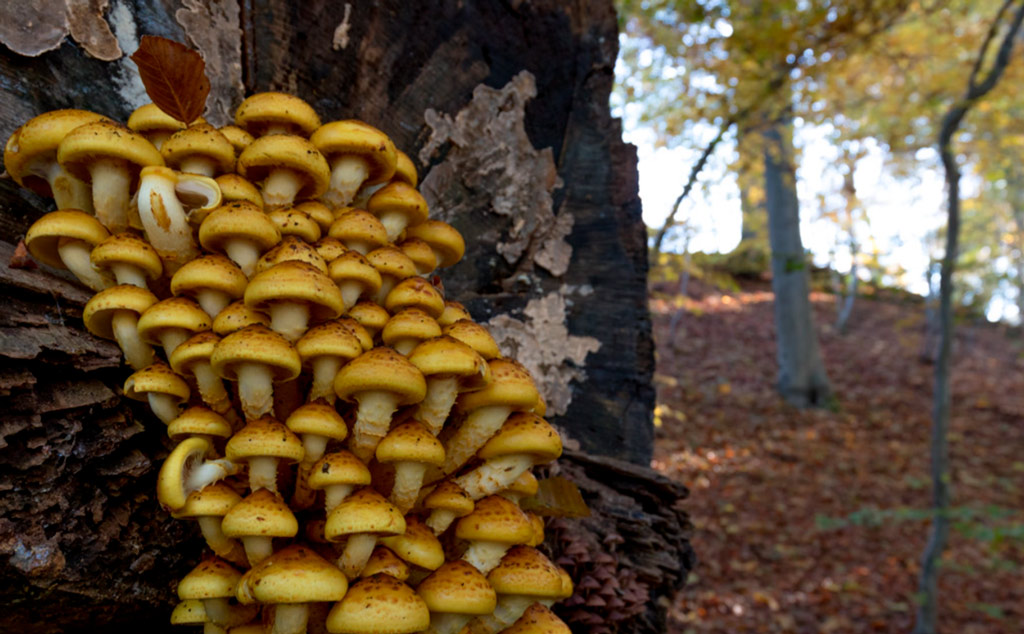
Special characteristics of the Armillaria mellea mushroom
- Armillaria mellea is a chameleon mushroom that can vary its appearance depending on the type of host tree.
- It can be honey-yellow when growing on mulberry trees, brown or reddish-brown on oak trees, and even completely white when growing on acacia trees.
Species similar to Armillaria mellea
It is essential to know the precautions when picking Armillaria mellea, as it can be confused with other species. Some important points to consider are:
- This mushroom resembles Hypholoma fasciculare, which is poisonous. Hypholoma fasciculare can be distinguished by its flesh, cap, and stem, which are more yellow in color, the absence of a well-formed ring, and the presence of veil remnants. In addition, its bitter taste persists even after cooking.
- Armillaria mellea also resembles Armillaria tabescens, which lacks a ring but is edible.
The devastating influence of Armillaria mellea on forests and plants
The species Armillaria mellea has been the subject of intensive study due to its destructive impact on forests. Up to ten distinct varieties of this fungus have been identified, such as Armillaria mellea var. maxima Barla, Armillaria mellea var. minor Barla, and Armillaria mellea var. sulphurea (Weinm. ). All these varieties share a fatal impact on the trees they invade.
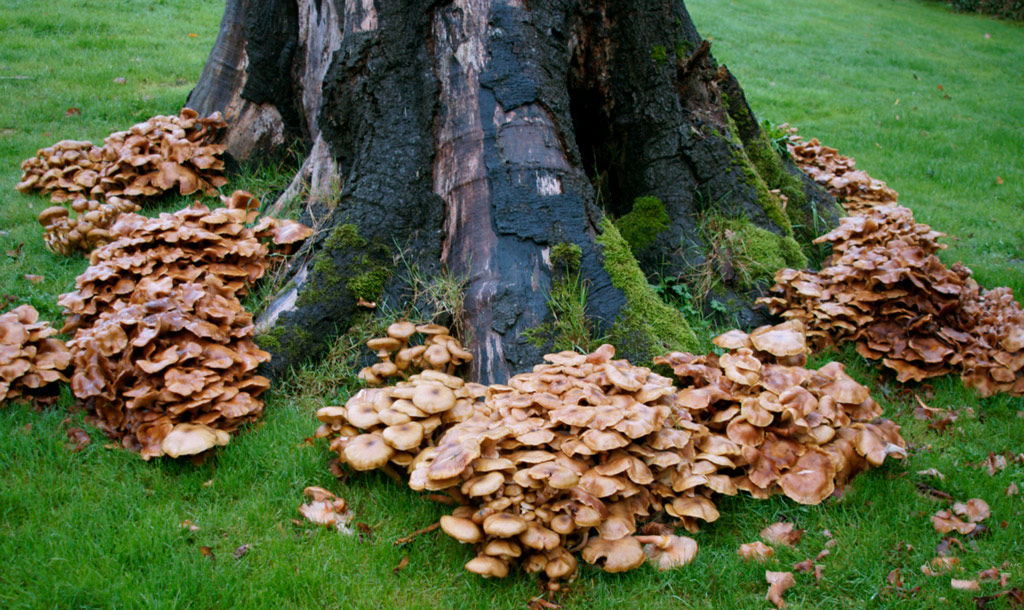
Armillaria, a plant pathogen
The fungus Armillaria mellea, also known as “honey fungus,” is responsible for a disease that affects susceptible plants and causes the root system to decay. This process leads to the plant's starvation, as it cannot absorb water and nutrients from the soil.
This disease is particularly common in trees growing in compact, heavy, and moist soils, where the root system is subjected to asphyxiating conditions. It is also likely to appear in young plantations established in areas previously used for forestry.
Affected trees and shrubs
This disease has a significant impact and affects many shrubs and trees, including:
- Mangoes
- Cherries
- Peaches
- Persimmons
- Pistachios
- Almond trees
- Apricot trees
- Plum trees
- Papaya trees
- Kermes oak trees
- Rosaceae
- Vines

Characteristic symptoms and damage
The symptoms on the roots are easily recognizable. They begin with a darkening and subsequent blackening of the bark. As the parasitic fungi progress along the root system, the initial tissues attacked disintegrate, forming a fibrous mass that varies from brown to black, depending on the species.
When the infection reaches the roots near the collar, it can spread to the base of the trunk. This results in a lesion at the base of the tree, with exudation of sap or gum, depending on the tree species affected.
In the aerial parts, Armillaria mellea produces symptoms that are not typical of rot fungi, but rather caused by alterations in the root system.
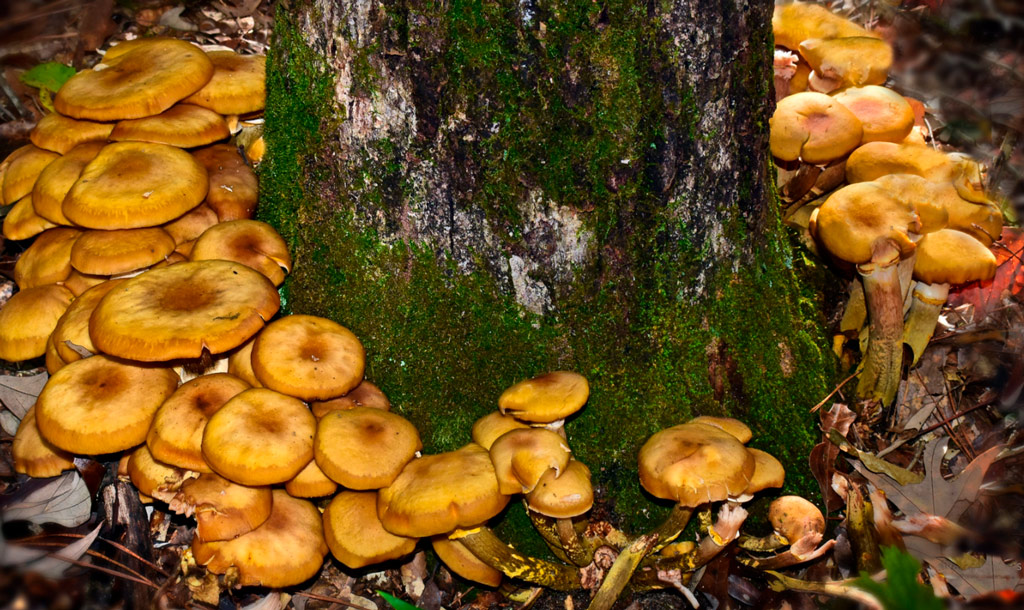
Types of reproduction
What makes Armillaria mellea even more formidable is its form of reproduction. It is not limited to reproduction by spores, which is common in fungi. It can also infect trees through their roots or bark. In this way, a single source of infection can spread throughout an entire forest.
This fungus forms a kind of network called a rhizomorph that spreads throughout the tree, including its roots, and spreads through contact with other individuals. Armillaria mellea is costly to eliminate, because cutting down an infected tree also infects the stump.
This requires extracting the roots from the soil and burning them. The lifespan of an infected tree can vary greatly, depending on whether the fungus is saprophytic or parasitic, and can range from hundreds of years to a few months.
The presence of Armillaria mellea in forests and plantations is a reminder of the importance of understanding and managing forest diseases to preserve our ecosystems and natural resources.
See you soon in the woods!

Te pueden interesar